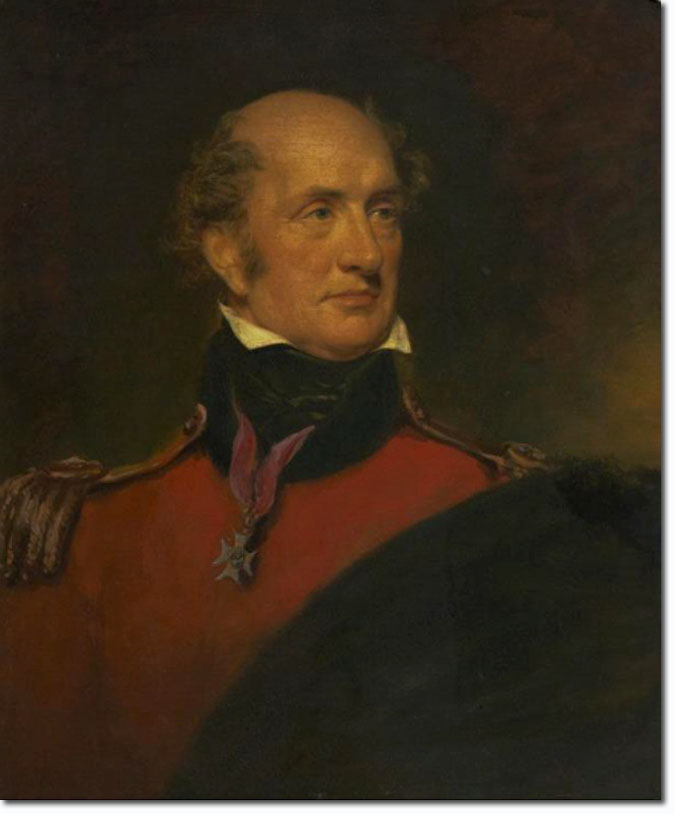|
|

 |
|
John Malcolm was born on 2 May 1769. He was the son of a tenant farmer in Eskdale on the Scottish border. He left school at the age of 13 and went to India to work for the East India Company. He held the rank of ensign in the Company’s armed forces and served as an officer for 11 years. In 1795 he was Military Secretary to General Sir Alured Clarke who had made a name for himself in the American War of Independence. Clarke also defeated the Dutch at the battle of Wynberg in Sep 1795 thus capturing the Cape of God Hope for the British. Malcolm was involved with this expedition, and soon after his arrival in India went to Hyderabad where he was assistant to the Resident. He took command of the infantry of the Hyderabad Contingent in the Mysore War. He was in favour with the Governor-General of Bengal, Marquess Wellesley who sent him to Persia on a diplomatic mission. On his return in 1801 he became Wellesley’s private secretary in Calcutta.
He was also on friendly terms with Wellesley’s brother Arthur who later became the Duke of Wellington. He participated in further military campaigns from 1803 to 1806. He was again sent to Persia in 1808 and after a few years came back to Britain where he wrote a History of Persia (published 1815). He was appointed a Knight of the Persian Order of the Lion and the Sun. He returned to India in 1817 and led troops at the battle of Mehidpoor in December 1817. He was then given responsibility for Central India but was overlooked when he hoped to be appointed Governor of either Bombay or Madras. At the age of 53 he thought his career was over and returned to Britain in 1822 where he wrote more books. But in 1827 he was appointed GCB and Governor of Bombay. He quarrelled with the judges of the Supreme Court there, over the proposed annexation of parts of the Deccan. He worked hard to curtail the practices of sati (self-immolation of widows on their husbands funeral pyres) and female infanticide. He was keen to promote education for Indians and training for higher government posts. Where possible he favoured indirect rule by the British so that the Indian rulers should be left in place. District Officers were given positions of power but encouraged to use minimal overt force. When he returned to Britain for the last time in 1831 he was MP for Launceston and supported the Duke of Wellington in opposing the Reform Bill. He purchased Warfield Hall in Berkshire and renovated it but he did not live long enough to enjoy it. He suffered a stroke soon after addressing the proprietors of the HEIC on the renewal of their charter. He died on 30 May 1833 and was buried at St James’s Church, Piccadilly. He was married to Isabella Campbell and they had 5 children. The portrait is by Samuel Lane. There is also a statue of Sir John Malcolm in Westminster Abbey. |
Armed Forces | Art and Culture | Articles | Biographies | Colonies | Discussion | Glossary | Home | Library | Links | Map Room | Sources and Media | Science and Technology | Search | Student Zone | Timelines | TV & Film | Wargames
